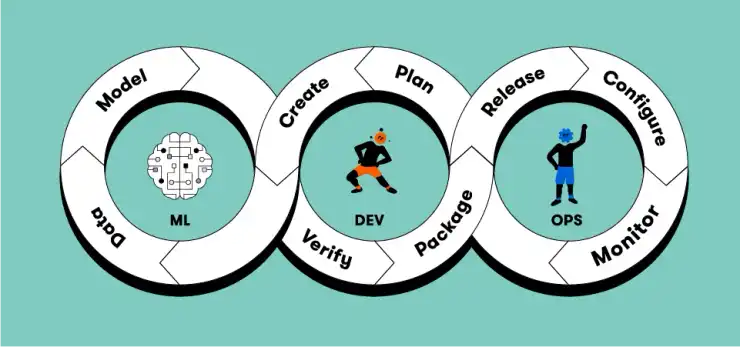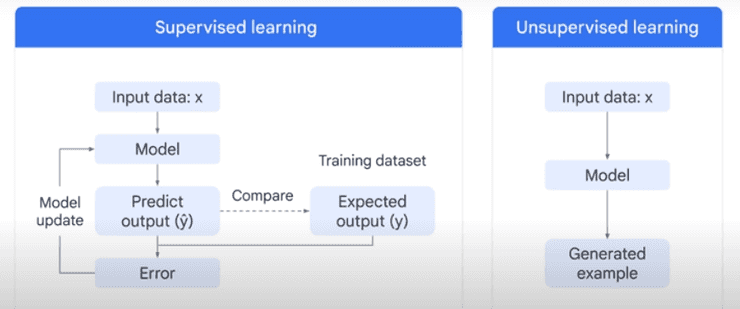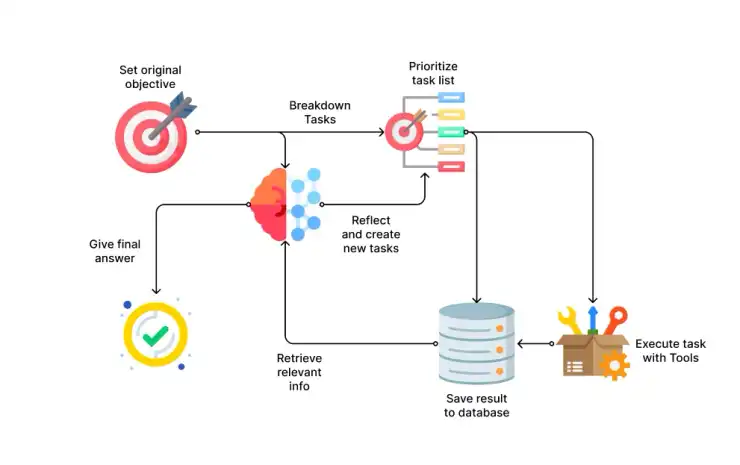Under Construction, Watch Your Step
TODO clean up diff between these 2 pages
AI Overview
Big surprise! MLOps is helped tremendously by knowing a fair bit about AI.
-
NLP
-
LLM
-
CNN
-
CV
-
Transfer Learning AI
-
ML A subset of AI dedicated to taking data from the past and training algorithms to create models that can perform highly complex tasks without being explicitly programmed.
-
Supervised (labeled): learn from past example to make future predictions
- Reinforcement Learning ??? Each iteration, weights are changed to minimize error
- Gradient Decent
-
Deep Learning A subset of ML that uses artificial neural networks to process more complex patterns than traditional ML. Uses ANNs.
- ANN (Artificial Neural Networks)(aka NN)
- Multiple hidden layers (Input Layer - Hidden Layers - Output Layer)
- Can process labeled and unlabeled data.
- “Semi-Supervised Learning”: small amount of labeled data, large amount of unlabeled.
- Labeled helps learn basics of task
- Unlabeled helps the NN generalize to new examples
- Generative AI
- Subset of Deep Learning.
- Uses ANNs so can process labled and unlabeled data.
- Uses Semi, supervised, unsupervised learning.
- Typically involves the Transformer architecture. Essentially, it’s a type of AI that can map long-range dependencies and patterns in large training sets, then use what it learns to produce new content, including text, imagery, audio, and synthetic data.
- Relies on large models, such as large language models (LLMs) that can classify and generate text, answer questions, and summarize documents
- LLM (Large Language Models)
- Subset of Deep Learning
- ANN (Artificial Neural Networks)(aka NN)
-
ML/Deep Learning Model Types
- Model types: Discriminative vs Generative

- Discriminative (aka Predictive) used to classify (is this a dog or a cat or something else)
- Generative (aka GenAI) used to generate (create a dog based on all the dog’s you were trained on)
- Part of flow is to check with Discriminative model to see if the generated object passes classification check.
- Uses unstructured content to learn patterns in content.
- NOTE: “model” can also be called a “function” with a multidimensional tensor/matrix with adjustable weights/values.

- Classical Supervised and Unsupervised Learning

- New Gen AI Supervised, Semi and Unsupervised Learning

- Gen Lang models
- PaLM
- LaMDA
- GPT
- Model types: Discriminative vs Generative
-
-
AI Roles
- Data Scientist
- Data Engineer
- DataOps
- ML Engineer
- MLOps
-
-
AGI
-
Training
- Gradient Descent
- Sigmoid Functions
- Attention
Types of Models
Open Source
See Hugging Face
- BLOOM by BigScience
- LLaMA by Meta AI
- Flan-T5 by Google
- GPT-J by Eleuther AI
Proprietary
- OpenAI
- co:here
- AI21 Labs
- Antrhopic
Generative Graphics
- Google Imagen
- Dall-E 2
- By OpenAI
- Midjourney
- Runs inside Discord
- Docs
- Relaxed Mode:
- free time use, slow, use for experiment
- /relax
- Fast Mode (Fast GPU):
- use for upscaling, etc, something you discovered in Relaxed Mode
- /fast
Misc
Libs and Langs
Libraries
- Pytorch
- TensorFlow
- LLM
LLMs
-
ChatGPT (OpenAI)
-
Google Bard
-
MS Bing AI
Langs
- Python
- R Lang
Autonomous Agents
GPT/LLM backed
- AutoGPT
- GTP-4 undelying
- BabyAGI
- AgentGPT
- Interactive Simulacra (Stanford)
- NPCs controlled by GPT
AutoML Frameworks
- Semantic Kernel
External Tools Access
Thanks to A comprehensive and hands-on guide to autonomous agents with GPT
Autonomous agents can now try to achieve a long-term goal by thinking through the sub-tasks, planning which actions to take, executing the actions with the help of external tools, and reflecting on the results.
- Toolformer
- JARVIS (HuggingGPT)
- VisualChatGPT (TaskMatrix)
- ReAct (Reasoning-Acting)
- Reflexion
Vector DBs
Used by above
- Pinecone
- Weaviate
- Milvus
- Faiss
- Chroma
Websites
OpenAI Hugging Face
Cloud Offerings
Certs
Articles
Building Your Own DevSecOps Knowledge Base with OpenAI, LangChain, and LlamaIndex


